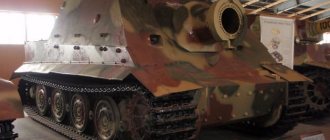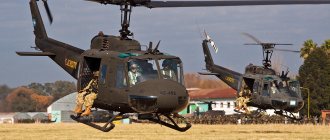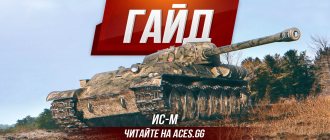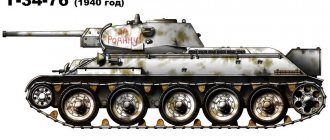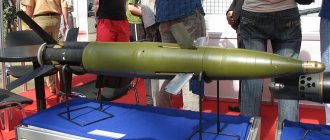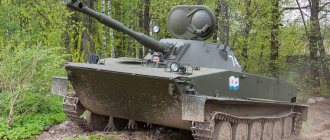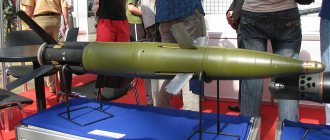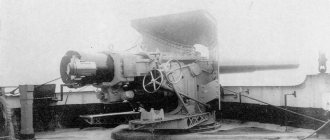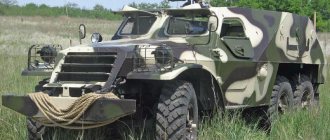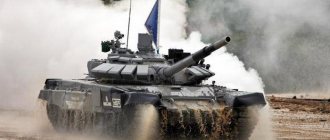The Jagdpanther was one of the most successful anti-tank self-propelled guns created during the Second World War, but their number on the battlefield was never significant enough to somehow change the balance of power. Built taking into account the development experience of the first self-propelled guns like the Ferdinand and Nashorn, most of which were self-propelled guns hastily built on outdated chassis adapted for the new role, the Jagdpanther appeared in 1943.
Combat use of the Jagdpanther
"Jagdpanthers" entered service only with heavy anti-tank fighter units and were subordinate to the command of the largest formations, as a rule, armies that fought in the most important areas. It was previously assumed that the battalion would include 30 vehicles, but due to limited production, many units were not fully equipped with new equipment.
Click to enlarge
The high efficiency of the Jagdpanthers in the fight against Russian and Anglo-American tanks brought them into the category of the best anti-tank self-propelled guns of the Second World War. On November 17, 1944, engineers demonstrated a model of a new anti-tank self-propelled gun on the Panther chassis, armed with a 128-mm PaK80 L/55 gun, but it never reached mass production, as well as the production of a standard.
On the battlefield, the Jagdpanther was a terrible weapon. Reports from the British Technical Intelligence Service stated that “a powerful 88-mm anti-tank gun, strong armor and appropriate mounting of armor plates, combined with an excellent control system and more than sufficient speed, make the new installation a formidable tank destroyer. All this leads us to assume that, along with the linear Panthers, the Germans will produce this new weapon in large quantities.” Here is a quote from another report: “The Jagdpanther is a self-propelled armored anti-tank weapon that can be used both for defense and during an attack. During an attack, the gun accompanies the leading infantry units in order to suppress the enemy's counterattack. In a defensive position, the Jagdpanther enhances the anti-tank power of its units, especially if it is in a forward position. Powerful armor allows the weapon to be used in these positions, and high maneuverability allows the self-propelled gun to be used on rough terrain.”
| To enlarge, click on the photo “Jagdpanther” - the image will open in a new window | ||
The Jagdpanther V self-propelled guns entered service only with heavy anti-tank divisions, consisting of three companies of 14 vehicles each. Three more fighters were assigned to the battalion headquarters. The Wehrmacht leadership ordered the use of new equipment exclusively to suppress enemy tank attacks. Self-propelled guns as part of a heavy anti-tank division were supposed to ensure quick success in decisive areas. Therefore, it was not allowed to disperse these self-propelled guns into individual parts. The use of Jagdpanther V tank destroyers in individual platoons was allowed only in certain cases, for example, when storming fortified enemy positions. Unless absolutely necessary, the Jagdpanther V was also prohibited from being used as fixed firing points or self-propelled artillery units. After the Jagdpanther Vs had completed their combat missions, they had to be immediately withdrawn to the rear for “inspection and repair.”
Tactical and technical characteristics of armored tank destroyers
Jagdpanther in battle
The first time the Jagdpanther tried its hand in combat was on July 30, 1943 in France. German and British tanks were involved in the battle. Reality has confirmed: the Jagdpanther is much stronger than the Churchills. Three German installations were able to destroy as many as 11 British tanks before help arrived in the form of new reinforcements.
The command planned to use the installations in the offensive in the Ardennes. Moreover, the Jagdpanther has already developed a reputation as a real beast that can “take down” a tank of any strength and thickness of armor. However, this was the Western Front, and not everything was so smooth on the Eastern Front. Many Jagdpanthers were destroyed by the hands of their crews. There was a shortage of fuel and spare parts. Deliveries of new tanks were slow; due to the rush, the vehicles were not tested, which subsequently gave rise to even greater problems with the mechanisms.
Gradually the number of Jagdpanthers decreased, which could not but affect the balance of power and the margin of victory. At the end of the war, there were only about 50 vehicles in the German army. They were dispersed throughout the entire theater of military operations, but they could not change anything - there were too few of them. The captured vehicles remained as a trophy for the allies.
Now Jagdpanthers can be found in museums in Germany, Great Britain, Russia, the USA, Switzerland and France.
Hetzer
| "Hetzer" | |
| Military index | Sd.Kfz.138/2 |
| Chassis | "Hetzer" |
| Combat weight. kg | 16 050 |
| Crew, people | 4 |
| Speed, km/h | |
| - along the highway | 42 |
| — along the country road | 25 |
| Cruising range, km | |
| - on the highway | 260 |
| - on the ground | 170 |
| Gas tank capacity, l | 320 |
| Length, mm | 6270 |
| Width, mm | 2630 |
| Height, mm | 2 170 |
| Ground clearance, mm | 420 |
| Track width, mm | 350 |
| Engine | "Praga" AC / 2800 |
| Weapon, type | RaK39 |
| Caliber, mm | 75 |
| Barrel length, cal, | 48 |
| Beginning projectile speed, m/s | |
| - armor-piercing | 790 |
| - sub-caliber | 990 |
| Ammunition, rds. | 41 |
| Machine guns, number x type | 1xMG-34 |
| Caliber, mm | 7,92 |
| Ammunition, cartridges | 600 |
| Reservation, mm | 60-20 |
Self-propelled gun Jagdpanther. Weight. Reservation. Dimensions. Armament
The Jagdpanther was one of the most successful anti-tank self-propelled guns created during the Second World War, but their number on the battlefield was never significant enough to somehow change the balance of power. Built taking into account the development experience of the first self-propelled guns like the Ferdinand and Nashorn, most of which were self-propelled guns hastily built on outdated chassis adapted for the new role, the Jagdpanther appeared in 1943.
Jagdpanzer IV
| "Jagdpanzer" IV | |
| Military index | Sd.Kfz.162 |
| "Vomag" | |
| Chassis | PzKpfw IV |
| Combat weight. kg | 10 800 |
| Crew, people | 4 |
| Speed, km/h | |
| - along the highway | 40 |
| — along the country road | 21 |
| Cruising range, km | |
| - on the highway | 190 |
| - on the ground | 130 |
| Gas tank capacity, l | 430 |
| Length, mm | — |
| Width, mm | 3170 |
| Height, mm | 1860 |
| Ground clearance, mm | 400 |
| Track width, mm | 400 |
| Engine | "Maybach" HL120TRM |
| Weapon, type | PaK39/2 |
| Caliber, mm | 75 |
| Barrel length, cal, | 48 |
| Beginning projectile speed, m/s | |
| - armor-piercing | 790 |
| - sub-caliber | 990 |
| Ammunition, rds. | 63 |
| Machine guns, number x type | 1 x MP-43 |
| Caliber, mm | 7,92 |
| Ammunition, cartridges | |
| Reservation, mm | 80-25 |
Panzer IV lang
| "Panzer" IV lang | |
| Military index | Sd.Kfz.162/1 |
| (V) "Alkett" (A) | |
| Chassis | |
| Combat weight. kg | 11 500 |
| Crew, people | 4 |
| Speed, km/h | |
| - along the highway | 35 |
| — along the country road | 18 |
| Cruising range, km | |
| - on the highway | 180 |
| - on the ground | 110 |
| Gas tank capacity, l | 430 |
| Length, mm | — |
| Width, mm | 3170 |
| Height, mm | 1850 |
| Ground clearance, mm | 400 |
| Track width, mm | 400 |
| Engine | "Maybach" HL120TRM |
| Weapon, type | StuK42 |
| Caliber, mm | 75 |
| Barrel length, cal, | 70 |
| Beginning projectile speed, m/s | |
| - armor-piercing | 925 |
| - sub-caliber | 1120 |
| Ammunition, rds. | 54 |
| Machine guns, number x type | 1xMP-43 |
| Caliber, mm | 7,92 |
| Ammunition, cartridges | |
| Reservation, mm | 80-25 |
- History of creation
- Description of design
- Combat use
"YAGDPANTHER"
History of creation
Shortly after the outbreak of World War II, the Germans faced a serious crisis in anti-tank artillery. Their main 37-mm anti-tank gun, the Pak 35/36, turned out to be completely powerless against the well-armored French tanks. The 50-mm Rak 38, which was adopted after it, also did not solve the problem. She did not make it to France, since the Wehrmacht received the first 17 guns only in July 1940, and she had to undergo a battle test already on the Eastern Front. The result was disastrous - it could only penetrate the armor of the T-34 and KB at close range. More or less, only the 75-mm Pak 40 cannon, which began entering service with the troops in February 1942, coped with this task and became the most popular German anti-tank weapon during the Second World War.
Prototype self-propelled gun "Jagdpanther" (chassis No. V-101)
Nevertheless, various German companies continued to work on creating increasingly powerful artillery systems capable of freeing the 88-mm anti-aircraft gun from solving unusual anti-tank tasks. It was for this purpose that the Kgarr company developed the Great 42 gun, which was adopted as the 8.8 cm Pak 43 - an 88-mm anti-tank gun of the 1943 model. The gun had a barrel weighing 3650 kg and length 6280 mm. The use of a cruciform carriage with sliding frames made it possible to reduce the height of the gun in the firing position to 1720 mm along the upper edge of the shield. Due to difficulties with the production of these carriages, the first six guns were only delivered to the troops in November 1943. In order to speed up the supply of much-needed guns to the army, the Kgarr company developed a variant of the 8.8 cm Pak 43/41, which used the carriage of a light field howitzer and the conventional wheel drive of a heavy field howitzer. The first 70 guns reached the front in April 1943.
Simultaneously with the design of towed 88-mm caliber artillery systems, the process of creating self-propelled versions was underway. Thus, in February 1943, the Deutschen Eisenwerken company began production of the Hornisse (“Hornet”) tank destroyer based on the so-called GW III/IV single chassis. However, the disadvantage of this self-propelled gun was its light armor (the open conning tower at the rear and top was protected by 10 mm armor plates) and its high silhouette - 2940 mm. The need for a powerful, well-armored tank destroyer was obvious. Therefore, even during the work on creating the Pak 43 cannon, on January 6, 1942, the Krupp company received an order to design a self-propelled gun armed with this weapon. The project was designated Panzer Selbstfahrlaffette IVc-2. Tactical and technical requirements provided for a combat weight of about 30 tons; armor protection: forehead – 80 mm, side – 60 mm; maximum speed 40 km/h. The Maybach HL 90 engine was supposed to be used. By June 17, 1942, the Krupp plant in Magdeburg had produced three prototypes of self-propelled guns based on the Pz.IV tank.
Prototype "Jagdpanther" without bulwarks. From this photo it is easy to compare the sizes of self-propelled guns and a person
However, on August 3, 1942, the Armament Directorate decided to use the chassis of the Panther tank, which was also still under development, to accommodate the 88-mm Pak 43 cannon, which was then firing only the first shots. Initially, the implementation of this project was entrusted to the Krupp company, whose specialists determined that the Panther chassis needed modification to accommodate such a powerful weapon. According to the company's engineers, preliminary design could be completed by January 1943. In September they produced a 1:10 scale model. On October 15, 1942, at a meeting at the Reich Ministry of War Economy and Industry, held under the leadership of A. Speer, it was decided to transfer further development of the vehicle to Daimler-Benz, since the assembly of the new self-propelled guns was initially planned at the enterprises of this particular company. However, Krupp still had to carry out the design work. By November 16, the Krupp team had produced a full-scale wooden model, which bore little resemblance to the final version of the Jagdpanther.
The second prototype of the Jagdpanther (No. V-102) before being shown to Hitler on December 16, 1943
On January 5, 1943, at a meeting of the technical commission of Daimler-Benz, a number of technical requirements for the future model were determined (then it was called 8.8 cm Sturmgeschutz - 88-mm assault gun). Thus, the thickness of the upper frontal armor plate should have been 100 mm, the lower - 60 mm, the angle of inclination - 60°. The thickness of the roof, sides and stern sheets is 30 mm with the same slope. The gun's embrasure mask was supposed to be made from high-quality armor and bolted to the hull, which was supposed to ensure quick dismantling of the gun. When replacing, transmission and gearbox components could be removed through the gun embrasure. The crew was to consist of six people - a commander, a gunner, a driver, a radio operator and two loaders. Moreover, according to the original plan, it was supposed to produce a new self-propelled gun based on the Panther II, but on May 4, 1943, the Ministry of Armaments decided to temporarily freeze this project, and the developers of the Jagdpanther were forced to make changes to the existing design in order to unify the components of the future self-propelled gun with already existing Panther tank.
The first prototype of the Jagdpanther self-propelled gun during testing in the winter of 1944
Due to the workload of Daimler-Benz factories, serial production was entrusted to MIAG (Muhlenbau-Industrie AG). In September 1943, the first felling was assembled there. In accordance with the updated technical specifications, the thickness of the frontal armor was 80 mm, the sides of the cabin and the lower frontal plate of the hull - 50 mm, the sides and rear of the hull - 40 mm, the roof of the cabin - 30 mm. But even in this version, the cutting turned out to be too heavy, so the thickness of the roof had to be reduced to 25 mm. The design of the carriage also changed; instead of the planned firing sector of 14° to the left and right, it provided only 12°. The crew was reduced to five people. On October 20, 1943, a wooden model was demonstrated to Hitler at the Aris training ground in East Prussia, and in the same month the first prototype left the factory floor. The second prototype was produced in November and presented before the Fuhrer on December 16, 1943.
It is interesting to note that by this time the car had changed several names. So, initially, as of October 2, 1942, it was called Schweres Sturmgeschutz auf Fgst. Panther mit der 8.8 cm L/71 (heavy assault gun on the Panther chassis with an 88-mm cannon of 71 caliber). By January 1, 1943, in the documents of the Armaments Directorate, the assault gun was transformed into a tank destroyer - 8.8 cm Pz.Jag.43/3 L/71 Panther. After going through several more variations on the same theme, the name of the car was officially approved on November 29, 1943. On this day, Hitler signed the OKH submission, according to which the final version sounded like the schweren Panzerjager 8.8 cm auf Panther I (heavy tank destroyer with an 88-mm cannon on the Panther I) or Jagdpanther - “Jagdpanther” (literally - hunting panther, panther hunter). The index according to the designation system of Wehrmacht combat and transport vehicles is Sd.Kfz.173. By order of the OKH this designation was introduced on February 1, 1944. But even after this, various documents contain different names for this combat vehicle.
One of the first serial Jagdpanthers, produced by the MIAG plant in January 1944. The driver has the same two periscopes as the prototypes, but there are no embrasures for firing personal weapons in the sides of the hull
Serial production began at the MIAG plant in Braunschweig in January 1944, when representatives of the Armaments Directorate accepted the first five serial self-propelled guns. The production of Jagdpanthers was not fast: seven were assembled in February, eight in March, and ten each in April and May. In June, MIAG was able to deliver only six self-propelled guns - the company’s factories were actively bombed by Allied aircraft during this period. Thus, in the first six months of mass production, 46 Jagdpanther self-propelled guns were manufactured. This quantity was enough to equip only one battalion of heavy tank destroyers. The plan provided for the production of 160 vehicles, which should have been enough for three battalions, as well as for using some of the vehicles for training purposes. Despite the bombing, the production of Jagdpanthers was increased to 15 in July and 14 in August.
Such production rates did not suit either the OKH or the Armaments Directorate. However, in response to the claims made, MIAG constantly complained about the lack of labor. To speed up the production of Jagdpanthers, an additional 300 workers were sent to the MIAG factories, and the Armament Directorate allocated 300 soldiers, who began work on August 4, 1944. A little later, another 160 soldiers arrived - ten people were allocated from each of the 16 tank destroyer divisions. Thanks to the influx of labor, 21 vehicles were delivered to the customer in September 1944, but in October, due to an air raid, only 8 vehicles were assembled.
Early (top) and late (bottom) Jagdpanther hulls
In order to somehow improve the situation, it was decided to involve enterprises of other companies in the production of the Jagdpanther.
First of all, Maschinenfabrik Niedersachsen Hannover (MNH) was involved in the production of the Jagdpanther. This enterprise already had significant experience in producing armored vehicles - since the summer of 1943 it had been producing Panther tanks. According to the approved schedule, MNH was supposed to produce 20 Jagdpanthers in November, 44 in December 1944 and 30 in January 1945. To ensure the fulfillment of this task, 80 self-propelled gun hulls were shipped from the MIAG plant to MNH. It was assumed that after the production of 94 Jagdpanthers, MNH would stop their production - according to the plan of the Armament Directorate, by February 1945, a plant of another company was supposed to reach the specified capacity.
"Jagdpanther" of early production, captured by British troops. Now this car is in the British Imperial War Museum
This company was MBA (Maschinenbau und Bahnbedart) in Potsdam-Drewitz. True, this company was not engaged in the production of armored vehicles, but it had large production areas and the equipment necessary for the production of self-propelled guns. The production plan for Jagdpanthers at the MBA took into account the time required for the company to develop new products: in November 1944 it was planned to produce only 5 vehicles, and another 10 in December. For 1945, the plan envisaged the production of 20 units in January, 30 in February, 45 in March, 60 in April, 80 in May, 90 in June, and from July 100 vehicles per month.
After the involvement of MNH and MBA enterprises in the production of Jagdpanthers, the total production of these vehicles amounted to 55 units in November and 67 in December 1944. Production reached its peak in January 1945, when 72 combat vehicles left the factory floors.
The actual production of Jagdpanthers can be judged from a table compiled using the most recent updated data. The output of firms MIAG and MNH is documented, and the MBA is obtained by subtracting the production of the first two firms from the total monthly production.
PRODUCTION "YAGDPANTHER"
Thus, it turns out that more than 419 Jagdpanthers were produced. How much more is difficult to say, but it is quite obvious that a certain number of cars left the factory floor in the next two weeks. German researcher and author of numerous books on the armored vehicles of the Third Reich, Walter Spielberger, writes about more than 34 Jagdpanthers manufactured in April. If this is so, then we can talk about at least 428 combat vehicles of this type produced.
Description of design
The Jagdpanther was a self-propelled artillery unit with a fixed armored cabin located in the front. The self-propelled gun hull was characterized by a large slope of the armor plates, both frontal (55° to the vertical) and side (30° to the vertical). Even the roof of the cabin had a slight angle of inclination. The projectile resistance of the upper frontal plate was slightly reduced only by the gap in the driver's viewing device and the embrasure of the course machine gun. All hatches for boarding and disembarking crew members were located on the roof of the cabin. A special feature of the design of the self-propelled guns was that the wheelhouse was a single unit with the hull, and was not attached to it with bolts or welding, like most German self-propelled guns.
Jagdpanther armored hulls in the courtyard of the MIAG plant
An 8.8 cm PaK 43/3 L/71 (or PaK 43/4 L/71) cannon of 88 mm caliber was installed in the front hull plate in a massive cast Saukopf type mask. The length of the gun barrel with a two-chamber muzzle brake was 6686 mm, weight 2200 kg. The horizontal pointing angle of the gun is +11°, the elevation angle is +14°, the declination angle is 8°. The gun's ammunition included 57 unitary rounds with armor-piercing, armor-piercing sub-caliber, high-explosive fragmentation and cumulative shells. The initial speed of the PzGr armor-piercing projectile. 39/43 weighing 10.16 kg (shot mass - 23.4 kg) was 1000 m/s. At a distance of 1000 m, it penetrated 165 mm armor. Armor-piercing sub-caliber projectile PzGr. 40/43 with a tungsten core had an initial ISO speed of m/s and penetrated 193 mm armor at the same distance. The maximum firing range is 9350 m, the height of the firing line is 1960 mm, the rate of fire is 6 – 8 rounds per minute.
Reservation scheme for the Jagdpanther self-propelled gun
The gun was equipped with a vertical wedge breech and semi-automatic copy type. The recoil devices were mounted above the gun barrel and consisted of a hydraulic recoil brake (right) and an air-liquid knurler (left). The lifting mechanism of the gun is of the screw type. The gunner had a Sfl ZFla periscope sight at his disposal.
The roof of the Jagdpanther's cabin. Since June 1944, support bosses for installing a 2-ton crane appeared on the roof of the cabin; one of them is visible behind the fan armor
The Jagdpanther's secondary armament consisted of an MG 34 machine gun mounted to the right of the gun in a ball mount. The machine gun's ammunition capacity is 1200 rounds. The crew had at their disposal two MP-40 submachine guns with 384 rounds of ammunition.
Jagdpanther
The drawing was made by V. Malginov
The breech and mounting of an 88-mm cannon in the Jagdpanther's wheelhouse
The Jagdpanther was equipped with a 12-cylinder carburetor four-stroke Maybach HL-230P3O engine with a power of 700 hp. at 3000 rpm (in practice, the speed did not exceed 2500). The dry weight of the engine was 1200 kg. Leaded gasoline with an octane rating of at least 74 was used as fuel. The capacity of five gas tanks was 720 liters. The fuel supply is forced, using four Solex diaphragm pumps. There are four carburetors, Solex 52 IFF40.
Stack of 88-mm unitary rounds in the fighting compartment of the Jagdpanther
The engine lubrication system is circulating, under pressure, with a dry sump. Oil circulation was carried out by three gear pumps, of which one was a pressure pump and two were a suction pump. The cooling system is liquid. There are four radiators, connected two in series. Radiator capacity is about 170 liters. Zyklon type fans were located on both sides of the engine.
To speed up engine starting in the cold season, a thermosiphon heater was used, heated by a blowtorch, which was installed on the outside of the hull aft sheet.
The transmission consisted of a cardan drive, a three-disc main dry friction clutch, an AK 7-200 gearbox, a MAN turning mechanism, final drives and LG 900 disc brakes.
The gearbox is a three-shaft, longitudinally arranged, seven-speed, five-way, with constant meshing gears and simple (inertia-free) cone synchronizers for engaging gears from 2nd to 7th.
Barrel options for the 88 mm Rak 43/3 cannon
The chassis for one side consisted of eight double road wheels with rubber tires with a diameter of 850 mm.
Suspension – individual torsion bar. In order to obtain a large torsion angle, the torsion bars were made double, which ensured the vertical movement of the track roller by 510 mm. The front and rear rollers were equipped with hydraulic shock absorbers.
The front drive wheels had two removable ring gears of 17 teeth each. Pin engagement. A breaker roller was installed between the drive wheels and the first support roller.
"Jagdpanther" with an 88-mm cannon with a composite barrel. France, 1944
The guide wheels are cast, with metal bands and a crank mechanism for tensioning the tracks.
The caterpillars are steel, fine-linked, with 86 single-ridge tracks each. Cast tracks, width 660 mm, track pitch 153 mm.
All Jagdpanther self-propelled guns were equipped with a Fu 5 radio station, which had a range of 6.4 km for telephone and 9.4 km for telegraph.
During mass production, changes were made to the design of the machine, albeit minor ones. In particular, the edging of the gun embrasure, the number of periscopes and, accordingly, the viewing slits for the driver changed. The binocular sight was replaced with a monocular one. Since the summer of 1944, the gun received a composite barrel instead of a monoblock barrel, which made it easier to dismantle. At the same time, three sockets were placed on the roof of the cabin for attaching a 2-ton crane. A “close combat device” was installed in the roof of the cabin - a 90-mm NbK 39 mortar for firing fragmentation and smoke grenades (the ammunition included 16 of them). In September 1944, cars were no longer coated with Zimmerit. In October 1944, the Jagdpanther received a new gun mantlet, attached to the frontal armor with eight bolts. The exhaust pipes were equipped with sheet flame arresters (Flammvernichter). Late self-propelled guns had an additional fan located in front of the roof of the fighting compartment.
TACTICAL AND TECHNICAL CHARACTERISTICS OF SAU "YAGDPANTHER"
In addition to linear self-propelled guns, several vehicles in the commander version were also manufactured. They were equipped with additional Fu 7 and Fu 8 radios, and also had a night vision device and an Sf/ZF 5 sight.
The first Jagdpanthers were received by the 654th heavy tank destroyer battalion. This is a vehicle from his 2nd company. France, May 1944
Combat use
The Jagdpanthers were used to form special battalions of heavy tank destroyers of the RGK, which were, as a rule, subordinate to the command of the field or tank armies. According to the staff, the Jagdpanther battalion was supposed to consist of three companies, each of which included three platoons of four self-propelled guns each and two company command vehicles. Thus, each company should have consisted of 14 self-propelled guns. The battalion headquarters had three more combat vehicles, resulting in a total of 45 Jagdpanthers in service with the battalion. However, in practice this state was never observed. Fortunately, both for us and for our allies, the Germans managed to release too few of these self-propelled guns.
"Jagdpanthers" of the 654th battalion during training sessions at the Grafenwoehr training ground. October 1944
The first eight vehicles were received by the 2nd company of the 654th heavy tank destroyer battalion on April 28, 1944. After the Allied landings in Normandy on June 6, 1944, the 654th Battalion was quickly prepared to be sent to the Western Front. On June 11, a report to Hitler on the state of the unit said that the headquarters with the 1st and 2nd companies of the 654th battalion was in full combat readiness, but it included only 8 Jagdpanthers and 5 Bergepanther ARVs, which were used for training driver mechanics. Only on June 14, 1944, 17 new self-propelled guns were shipped to the 654th battalion. However, without waiting to receive this replenishment, on June 15, the 2nd company of the 654th battalion loaded the 8 Jagdpanthers it had onto railway platforms and went to the Western Front, where it became part of the Training Tank Division. From June 27 until the beginning of July, the Jagdpanthers were at the disposal of the 47th Tank Corps and fought with British tank units.
The left side of the fighting compartment. The placement of 88-mm rounds, the breech of the mortar for firing smoke grenades, and the basket for installing a periscope sight are clearly visible.
"Jagdpanthers" of the 2nd company of the 654th battalion of heavy tank destroyers on the road near Gummersbach. September 1944.
A column of Jagdpanthers on the street of a French city. 1944
The baptism of fire of the new self-propelled guns took place on June 30, 1944. Near Le Lezhe in Normandy, a squadron of the 6th British Tank Brigade ran into three Jagdpanthers of the 654th battalion. The fight was extremely short. In two minutes, the Jagdpanthers destroyed 11 Churchills!
As of August 1, 1944, the 654th battalion had 8 serviceable self-propelled guns and two Panther command tanks. Another 16 self-propelled guns were under repair. To make up for losses, on August 16 the battalion received another 8 Jagdpanthers. In total, during August the battalion irretrievably lost 17 vehicles, mainly during the breakout from the Falaise pocket. The remaining self-propelled guns required repairs. On September 9, the battalion was recalled from the front and on the same day left for the Grafenwoehr training ground in Bavaria.
Soon, the 519th, 559th, 560th and 655th battalions of heavy tank destroyers were re-equipped with new combat vehicles, each of which had one company equipped with Jagdpanthers. The other two were armed with Jagdpanzer IV, Panzer IV/70 tank destroyers or StuG 40 assault guns. This organization was approved by Hitler as the main one for heavy tank destroyer battalions on September 11, 1944.
The right side of the fighting compartment. The installation of a directional machine gun and a vertical rod with a movable machine for attaching a stereo tube in the commander's hatch are clearly visible
By the beginning of the German counteroffensive in the Ardennes, there were 56 Jagdpanthers on the Western Front, consisting of five battalions of heavy tank destroyers. However, only 27 vehicles were in combat-ready condition, but of this number, no more than 20 took part in the offensive that began on December 16, 1944.
Commander's Jagdpanther from the 559th Heavy Tank Destroyer Battalion. This vehicle (chassis No. 300054) was produced by the MIAG plant in July 1944. Captured by the British, now on display at the Imperial War Museum in London
It should be noted that in 1944, Jagdpanthers were not used on the Eastern Front. But already on January 13, 1945, the 563rd and 616th heavy tank destroyer battalions each received five Jagdpanthers. A few days later, 9 more Jagdpanthers were sent to these units. You can learn about the actions of these vehicles on the Eastern Front from the report of the commander of the 563rd battalion:
“The battalion arrived in Mielau from Courland on December 3, 1944, consisting of headquarters and three companies. By order of the Inspector General of Tank Forces, the unit was to be reorganized into a heavy battalion of tank destroyers and have the following composition:
headquarters company;
1st company, armed with Jagdpanthers;
2nd and 3rd companies, armed with Pz.IV/70 tank destroyers;
support company;
maintenance company.
Another commanding Jagdpanther of the 559th battalion hit by Shermans and burned out. September 1944
On January 16, 1945, the formation of three companies was completed (there was no combat equipment). On January 17, the full battalion was brought into battle in the Grudusk area. During this operation, 55 specialists (vehicle commanders, drivers, gunners) were lost. Before the start of the fighting, 150 people left the unit.
Condition of the equipment: 35 auxiliary and special vehicles were under repair in the companies and 10 vehicles were in the maintenance company. 23 vehicles were sent to the military commandant in Mielau.
By order of the high command, the battalion was supposed to receive its weapons in Soldau, but as a result of a breakthrough by Russian tanks, it lost 16 special vehicles there. The weapons assigned to the battalion (24 Pz.IV/70 self-propelled guns and 18 Jagdpanthers) were sent to Allenstein, where two companies of 12 Pz.IV/70s each, a Jagdpanther company (9 vehicles), as well as an attached 3rd a company of the 616th heavy tank destroyer battalion with nine Jagdpanthers. The shortage of crews was covered by the transfer of specialists from other units.
Reformation in Allenstein began on January 20 at 10:00 am and ended on January 21 at 7:00 am. Due to lack of time, the arriving self-propelled guns were inspected and checked only superficially, no firing was carried out, and the driver mechanics were partly seconded from parts of East Prussia. People are completely exhausted from previous battles.
British sappers are engaged in the evacuation of the Jagdpanther (chassis No. 300027). This vehicle belonged to the 3rd company of the 654th heavy tank destroyer battalion. Mid-August 1944
On January 21, 1945, the 563rd heavy tank destroyer battalion left in two groups for the battlefield. Since that time, he has participated in battles north of Allenstein, south and west of Guttstadt, occupied Liebstadt and is currently fighting in the Wormditt area.
Over the course of 10 days, the battalion knocked out and destroyed 58 enemy tanks. The losses are as follows:
four Pz.IV/70 and one Jagdpanther were irretrievably lost from enemy fire;
eight Jagdpanthers and four Pz.IV/70s were blown up due to lack of fuel;
one Jagdpanther and eight Pz.rV/70s that were stuck and could not be evacuated were blown up;
Three Jagdpanthers and three Pz.IV/70s, which required lengthy repairs, were blown up.
Taking into account the available personnel, the battalion can currently man and operate 15 Jagdpanther or Pz.rV/70 self-propelled guns.”
Thus, if we follow German statistics, which took into account only combat losses, then we must talk about the ratio of losses over 10 days as 58:5. At the same time, the “objective” Germans took into account only irretrievable losses for themselves, while the enemy took into account everything. But it is quite obvious that some of the 58 destroyed Soviet tanks were returned to service after repairs. In addition, there is no doubt that on the German side it is necessary to count all losses, because they blew up their cars for a reason, but as a result of the unfavorable course of hostilities for them. And this is no longer 5 combat vehicles, but 32! And the ratio appears completely different! But let's return to the Jagdpanthers.
The driver of the Jagdpanther had at his disposal the same three pedals as in any car: the main clutch control pedal, the brake pedal and the accelerator pedal.
"Jagdpanther", knocked out by two armor-piercing shells that hit the engine compartment. In the background is a damaged American M36 Slugger tank destroyer. Photo taken March 17, 1945
As for the latter, in the last months of the war a significant number of Jagdpanthers were supplied not to tank destroyer battalions, but to tank formations to make up for losses in tanks. Thus, in February 1945, 10 vehicles of this type each received the 2nd SS Panzer Division "Reich", the 9th SS Panzer Division "Hohenstaufen" and the 10th SS Panzer Division "Frundsberg". A number of other tank formations of the Wehrmacht and SS troops also received several Jagdpanthers. It must be said that the dispersion of anti-tank self-propelled guns among tank units had a negative impact on their combat use. The latter circumstance is well illustrated by the report of Oberleutnant Bock, who inspected the tank divisions of the 6th SS Panzer Army and the 8th Field Army, and also had the task of finding out the reasons why the 560th battalion of heavy tank destroyers blew up a large number of tanks during the battles in Hungary. self-propelled units. Chief Lieutenant Bock managed to find out that:
British tank crews inspect the Jagdpanther, which was blown up by a mine. Germany, March 1945
A disarmed early model Jagdpanther. The cast “pig snout” type mask and the edging of the gun embrasure are clearly visible
"Jagdpanther", knocked out in battles near Lake Balaton. Hungary, March 1945
Burnt "Jagdpanther". Noteworthy are the two driver's periscopes, like those of the earliest cars, and the composite barrel of the 88-mm cannon, characteristic of later models. Hungary, March 1945
“The battalion was subordinate to the 12th SS Panzer Division “Hitler Youth” and was used in battle as the 3rd battalion of the tank regiment. The battalion's support company was combined with the regiment's support unit into the so-called support group. In the same way, evacuation units were consolidated so that repairs and evacuation could be centrally managed. As a result of this, the battalion commander could not normally manage either the provision or repair of military equipment. In addition, the battalion was supposed to send an orderly to the regiment, but there was no person in the battalion who could be entrusted with these duties.
Engine Maybach HL-230P30
When leaving the battle in the area from Bakonyevsky Forest to Oldenburg, the battalion did not receive any fuel at all. In order to remove the nine Pz.IV/70 and three Jagdpanthers available, it was necessary to use fuel from captured enemy vehicles.
"Jagdpanther" of late production, shot down on the outskirts of Konigsberg. Spring 1945
The largest number of self-propelled gun explosions occurred due to insufficient organization of the evacuation, which should have been carried out by the tank regiment of the Hitler Youth division. However, the regimental equipment was evacuated first, while the self-propelled guns of the 560th battalion were the last to be evacuated. However, in most cases it was no longer possible to do this, since due to the weak resistance of their own infantry, the Russians bypassed the positions of self-propelled guns stuck in the mud or broken down.
Moscow, Gorky Central Park of Culture and Leisure, exhibition of captured equipment. Soldiers of the Red Army and advanced production workers get acquainted with the captured Jagdpanther, 1945.
"Jagdpanthers" and "Panthers" in the assembly shop of the MNH company in Hanover, captured by American troops. May 1945
For example, the evacuation of a tank destroyer that got stuck on March 8, 1945, was carried out only on March 21.
Repeated persistent requests from the battalion commander sent to the headquarters of the regiment and division to provide him with additional evacuation means came back with resolutions that the means for evacuation were not available and, if necessary, the vehicles must be blown up. Meanwhile, the tank regiment actively used self-propelled guns of the 560th battalion, providing them to other units and without informing the battalion command about it. As a result, very often the battalion commander did not know how many combat-ready vehicles he had and where they were located.
Another reason for the large losses was tactically incorrect combat use. Tank destroyers, in almost all cases without exception, were used in battle as assault guns along with infantry as a rearguard. As a result, damaged or disabled self-propelled guns in most cases remained in the enemy's position.
For a vehicle that can only fire forward in the direction of travel, such use is completely unacceptable, since it must maneuver before each change of position.
A captured "Jagdpanther" during testing at the NIBT Test Site of the GBTU of the Red Army in Kubinka. 1945
In some cases, it was ordered to bury damaged tank destroyers in the ground and use them as firing points. This use of tank destroyers is also incorrect, since as a result it was necessary to blow up the vehicles in order to avoid capture by the enemy who was outflanking them.”
It is interesting to note that such a tank-like use of self-propelled guns was characteristic of the Red Army in 1943, during the period of the formation of self-propelled artillery units. The Germans got carried away with this at the end of the war, when they were forced to make up for the loss of tanks with self-propelled guns.
As of March 15, 1945, there were 145 Jagdpanthers in Wehrmacht and SS troops, of which only 59 were in combat readiness. Of this number, 34 vehicles were on the Eastern Front, and 25 on the Western Front. On April 10, 1945, only 53 Jagdpanthers remained in the German troops. Of the 16 combat-ready vehicles, 11 were on the Eastern Front and 5 on the Western Front. It goes without saying that such a tiny number of self-propelled guns, even very good ones, could not have a noticeable impact on the course of hostilities.
After the war, the Jagdpanthers were in service for some time in the French army, in units stationed in Satori and Bourges.
Table of contents
Jagdpanther
| "Jagdpanther" | |
| Military index | Sd.Kfz.173 |
| , "MNH" | |
| Chassis | PzKpfw V |
| Combat weight. kg | 10 600 |
| Crew, people | 6-6 |
| Speed, km/h | |
| - along the highway | 54 |
| — along the country road | 25 |
| Cruising range, km | |
| - on the highway | 150 |
| - on the ground | 100 |
| Gas tank capacity, l | 700 |
| Length, mm | 9920 |
| Width, mm | 3270 |
| Height, mm | 2 720 |
| Ground clearance, mm | 540 |
| Track width, mm | 660 |
| Engine | "Maybach" HL230P30 |
| Weapon, type | PaK43 |
| Caliber, mm | 88 |
| Barrel length, cal, | 71 |
| Beginning projectile speed, m/s | |
| - armor-piercing | 1000 |
| - sub-caliber | 1130 |
| Ammunition, rds. | 57 |
| Machine guns, number x type | 1x MG-34 |
| Caliber, mm | 7,92 |
| Ammunition, cartridges | 600 |
| Reservation, mm | 80-40 |
Photo self-propelled gun Jagdpanther
German self-propelled gun "Jagdpanther" (Sd.Kfz.173 Jagdpanther) of the 559th tank destroyer battalion, knocked out by units of the 1st Polish tank division near Raamsdonk, the Netherlands.
German heavy self-propelled gun "Jagdpanther" (Sd.Kfz.173 Jagdpanther) from the 654th tank destroyer battalion with its crew on the march. An early production self-propelled gun, in theory, should be in Zimmerit. There is no directional MG-34, headlight without blackout. But the left “eye” of mechanical water is welded shut, which means the car was modernized at the front. Judging by the monolithic gun barrel and the specific fixed part of the gun mantlet, this is an early production Jagdpanther Ausf.G1.
A damaged and burnt-out Jagdpanther tank destroyer (Panzerjager V Jagdpanther, Sd.Kfz.173) of the 559th heavy tank destroyer battalion of the Wehrmacht (schwere Heeres-Panzerjäger-Abteilung 559) near a house in the Belgian town of Geel. At the time of filming, the battalion was commanded by Major Erich Sattler, at that time there were at least three Jagdpanthers in the battalion, all of them were shot down.
German heavy self-propelled gun "Jagdpanther" (Sd.Kfz.173 Jagdpanther) from the 654th tank destroyer battalion, knocked out by American tankers in Hargarten, Germany. Visually comparing the hole in the hull with the diameter of the barrel, we can assume that it was shot from a 75 (76) mm cannon. There were at least two hits on the right psaltery, plus a dent in the rib nearby, on the left and on the body nearby (it crashed) - apparently they slowed it down. There was a chip on the mounting area for the gun alignment, we had a good shot at it. Transitional model. The barrel is composite, the driver's left periscope is missing, but there is no Zimmerit. They shot from the direction where the photographer was standing. It’s been standing for a long time, they managed to “scavenge” it, the papers are scattered, but the canister was not removed from the side (possibly broken), and the MG was not removed. The car was additionally painted, the cross on the front armor is faintly visible. Its forehead armor is 80 mm plus an inclination of 45 degrees; if a 76 mm cannon fired, it would most likely not be further than 500 meters. It feels like the tracks were damaged first, and then they walked around her from the left, closer, and pierced her in the forehead. This is also indicated by the fact that on the left side of the self-propelled gun, on the front plate of the left track, there is a ricochet and a moim of the same caliber.
A destroyed German tank destroyer "Jagdpanther" (Panzerjager V Jagdpanther, Sd.Kfz.173) of the 559th heavy tank destroyer battalion of the Wehrmacht (schwere Heeres-Panzerjäger-Abteilung 559) in the forest near the Belgian village of Hechtel. 4 holes are clearly visible in the side and stern.
German heavy self-propelled gun "Jagdpanther", destroyed as a result of an air attack near Altenkirchen. Most likely, the amers decided to move the damaged tank off the road with a bulldozer. At the same time, they overturned it, picked up the bark on the tree, and plowed up the damp soil. Tanks are overturned by an explosion, the chassis on the side of the explosion is usually quite torn apart, or even completely swept away with all the rollers. In the background, by the way, there is an overturned truck, which was clearly thrown back so as not to interfere with the road - so it looks like the equipment was really just dumped left and right. The panther, apparently, hit something with its caterpillar (quite possibly a tree) and toppled over. And they could have pulled it off with tanks, or even a couple of tanks.
Ferdinand
| "Ferdinand" | |
| Military index | Sd.Kfz.184 |
| Chassis | VK 4501(P) |
| Combat weight. kg | 10 500 |
| Crew, people | 6 |
| Speed, km/h | |
| - along the highway | 22 |
| — along the country road | 11 |
| Cruising range, km | |
| - on the highway | 210 |
| - on the ground | 140 |
| Gas tank capacity, l | |
| Length, mm | 8 140 |
| Width, mm | 3 380 |
| Height, mm | 2 970 |
| Ground clearance, mm | 480 |
| Track width, mm | 640 |
| Engine | 2x Maybach HL120TRM |
| Weapon, type | PaK43 |
| Caliber, mm | 88 |
| Barrel length, cal, | 71 |
| Beginning projectile speed, m/s | |
| - armor-piercing | 1000 |
| - sub-caliber | 1130 |
| Ammunition, rds. | 55 |
| Machine guns, number x type | 1xMG-34 |
| Caliber, mm | 7,92 |
| Ammunition, cartridges | 600 |
| Reservation, mm | 200-80 |
